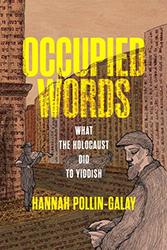For decades, popular Holocaust narratives have often highlighted survivor stories: tragedy tempered by resilience and glimpses of humanity amid horror. These accounts, to be sure, are vital. It’s crucial to preserve the firsthand perspectives of the few who survived.
Lately, though, a shift has emerged. More recent works move beyond uplifting narratives to portray the raw suffering, emotion, and overwhelming mortality Jews faced. Grittier and less hopeful than many well-known memoirs, these accounts reflect a more common Holocaust experience — one that ended in death.
Such is the case with Levi Shalit’s So We Died: A Memoir of Life and Death in the Ghetto of Šiauliai, Lithuania, recently translated into English by Veronica Belling, Ellen Cassedy, and Andrew Cammy and published by the University of Alabama Press. Written in the immediate aftermath of the war’s end, when memories were fresh and emotions raw, Shalit chronicled life in his Lithuanian village starting with the German occupation and creation of the Jewish ghetto through its eventual liquidation in 1943.
As Belling explains in her excellent introduction to the text, So We Died is not strictly chronological, but arranged thematically, making it simple for readers and researchers to learn specific details about life — and death — like how food cooperatives worked, how the ghetto administration was run, and how Jewish officials tried to maintain some semblance of schools for kids. While most readers can never know what it was like to live in the ghettos, such passages help illuminate intimate details of ghetto life in a rich yet haunting way.
One of the most remarkable aspects of So We Died is the emphasis that Shalit puts on large- and small-scale Jewish resistance. “The more time passes,” he writes in the opening chapter, “the more it becomes clear that in the estimation of ‘the world,’ our confinement in the ghettos and concentration camps was due to our own egregious error … and under the pressure of the apathy of the world toward the victims, and the growing forgiveness toward the murderers … the voices of accusation become more and more muffled.” A sentiment that, perhaps, feels uncomfortably relevant to our own world, Shalit’s writing makes it clear that the Nazis and their (many) Lithuanian allies were the sole aggressors and, importantly, that their Jewish victims did whatever they could to undermine their power. Whether it was the ghetto’s resistance group, Masada, procuring guns for what they hoped would be an armed rebellion, enslaved factory workers who stole products from their Nazi-run workshops, or the small army of women and children who smuggled food to feed the ghetto, Shalit makes sure that their efforts are remembered by the world, even if those efforts, imperfect and difficult as they were, were not enough to stop the Nazis from deporting and killing most of their ghetto’s prisoners.
Shalit estimates that of the town’s 10,000-person Jewish community, only about 600 individuals survived, meaning a staggering 94% of their town’s Jews were killed. In So We Died, Shalit and his translators make sure that their voices, names, and experiences are not forgotten.
Leah Grisham, PhD, is a Cleveland-based writer. Her first book, Heroic Disobedience, was published in 2023. She is currently working on a new book about the Holocaust. Catch up with her at leahshewrote.com





